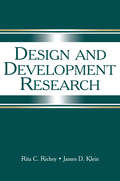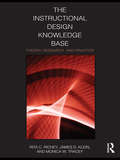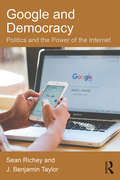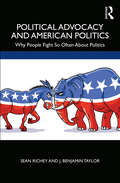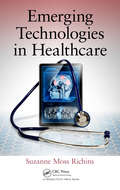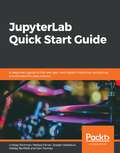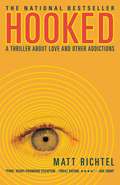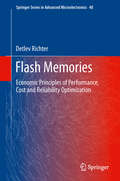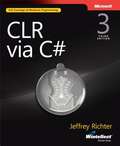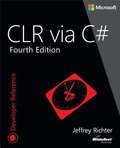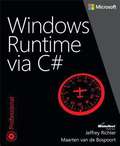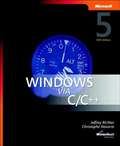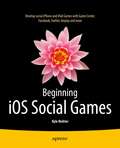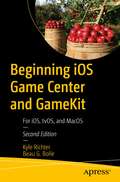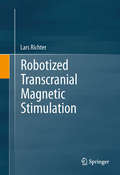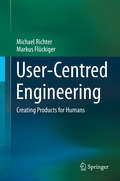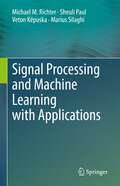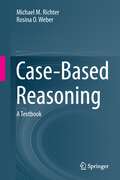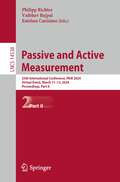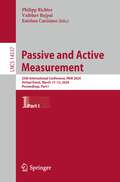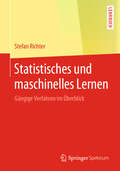- Table View
- List View
Encyclopedia of Terminology for Educational Communications and Technology
by Rita C RicheyThe Encyclopedia of Terminology for Educational Communications and Technology is a volume of scholarly definitions and short discussions of approximately 180 key terms of the field. Each 200-500 word entry includes material such as the salient attributes of the term, any alternative views and interpretations of the term, and future trends. The definition discussions are supported with relevant literature from educational communications and technology and related fields, such as communications or educational psychology. Individual signed entries are written by over 50 established scholars from throughout the field and throughout the world. The terms included in the encyclopedia cover the many topics addressed by the field's practitioners and scholars. They encompass six general categories of educational technology content - foundational subjects, instructional design, technology and media, analysis and evaluation, management and organizational improvement, and research and theory.
Design and Development Research: Methods, Strategies, and Issues
by Rita C. Richey James D. KleinAECT Design & Development Outstanding Book Award for 2008! Design and Development Research thoroughly discusses methods and strategies appropriate for conducting design and development research. Rich with examples and explanations, the book describes actual strategies that researchers have used to conduct two major types of design and development research: 1) product and tool research and 2) model research. Common challenges confronted by researchers in the field when planning and conducting a study are explored and procedural explanations are supported by a wide variety of examples taken from current literature. Samples of actual research tools are also presented. Important features in this volume include: concise checklists at the end of each chapter to give a clear summary of the steps involved in the various phases of a project; an examination of the critical types of information and data often gathered in studies, and unique procedures for collecting these data; examples of data collection instruments, as well as the use of technology in data collection; and a discussion of the process of extracting meaning from data and interpreting product and tool and model research findings. Design and Development Research is appropriate for both experienced researchers and those preparing to become researchers. It is intended for scholars interested in planning and conducting design and development research, and is intended to stimulate future thinking about methods, strategies, and issues related to the field.
The Instructional Design Knowledge Base
by Rita C. Richey James D. Klein Monica W. TraceyThe Instructional Design Knowledge Base: Theory, Research and Practice provides ID professionals and students at all levels with a comprehensive exploration of the theories and research that serve as a foundation for current and emerging ID practice. This book offers both current and classic interpretations of theory from a range of disciplines and approaches. It encompasses general systems, communication, learning, early instructional, media, conditions-based, constructivist design and performance-improvement theories. Features include: rich representations of the ID literature concise theory summaries specific examples of how theory is applied to practice recommendations for future research a glossary of related terms a comprehensive list of references. A perfect resource for instructional design and technology doctoral, masters and educational specialist certificate programs, The Instructional Design Knowledge Base provides students and scholars with a comprehensive background for ID practice and a foundation for future ID thinking.
Google and Democracy: Politics and the Power of the Internet
by Sean Richey J. Benjamin TaylorFor the first time in human history, access to information on almost any topic is accessible through the Internet. A powerful extraction system is needed to disseminate this knowledge, which for most users is Google. Google Search is an extremely powerful and important component to American political life in the twenty-first century, yet its influence is poorly researched or understood. Sean Richey and J. Benjamin Taylor explore for the first time the influence of Google on American politics, specifically on direct democracy. Using original experiments and nationally representative cross-sectional data, Richey and Taylor show how Google Search returns quality information, that users click on quality information, and gain political knowledge and other contingent benefits. Additionally, they correlate Google usage with real-world voting behavior on direct democracy. Building a theory of Google Search use for ballot measures, Google and Democracy is an original addition to the literature on the direct democracy, Internet politics, and information technology. An indispensable read to all those wishing to gain new insights on how the Internet has the power to be a normatively valuable resource for citizens.
Political Advocacy and American Politics: Why People Fight So Often About Politics
by Sean Richey J. Benjamin TaylorPolitical Advocacy and American Politics provides a detailed explanation as to why citizens engage in interpersonal advocacy in the United States. Sean Richey and J. Benjamin Taylor eloquently show how the campaigns, social media, and personality and partisanship affect one's propensity for candidates, which often leads to arguments about politics. Using original qualitative, survey, and experimental studies, Richey and Taylor demonstrate the causes of political advocacy over time in the political environment and at the individual level. While some worry about the incivility in American politics, Richey and Taylor argue political talk, where conflict is common, is caused by high-activity democratic processes and normatively beneficial individual attributes. Furthermore, Richey and Taylor argue that advocacy—when conceptualized as a democratic "release valve"—is exactly the kind of conflict we might expect in a vibrant democracy. Political Advocacy and American Politics: Why People Fight So Often About Politics is ideal for university students and researchers, yet it is also accessible to any reader looking to learn more about the role campaigns and personal attributes play in the decision to advocate.
Emerging Technologies in Healthcare
by Suzanne Moss RichinsRecent changes in healthcare delivery as mandated by the Patient Protection and Affordable Care Act are forcing providers to focus on technology as a way to improve the health of the population, while engaging patients and encouraging them to take accountability for maintaining their own health. One way of doing this is through the use of mobile he
JupyterLab Quick Start Guide: A beginner's guide to the next-gen, web-based interactive computing environment for data science
by Lindsay Richman Melissa Ferrari Joseph Oladokun Wesley Banfield Dan ToomeyGet to grips with the basics of JupyterLab and its web interface with the help of this quick start guide Key Features Manage JupyterLab kernels, code consoles, and terminals, and share your work over the cloud Organize your data solutions within JupyterLab Install and configure extensions on JupyterLab using easy-to-follow examples Book Description JupyterLab is a web-based interface and the natural evolution of Jupyter Notebook. This guide will take you through the core commands and functionalities of JupyterLab and help you enhance your JupyterLab productivity. Starting with the installation of JupyterLab, this book will give you an overview of its features and the variety of problems it solves. You'll see how you can work with external files inside the platform, and understand how to use the code console and terminal. This will help you have distinct control over the scripts you work with. As you progress, you'll get to grips with the extensions available in JupyterLab, and gain insights into adding extensions to introduce new functionality in the interface. This book also covers widget operations within your document, different design patterns in JupyterLab, and the various methods for exchanging Notebooks. Additionally, you'll explore how to host JupyterLab Notebooks on GitHub. By the end of this Jupyter book, you'll have become well-versed with all the components of JupyterLab and be able to use it collaboratively within your data science teams. What you will learn Install JupyterLab and work with Jupyter Notebooks Host JupyterLab Notebooks on GitHub and access GitHub resources in your Notebooks Explore different methods for exchanging Notebooks Discover ways in which multiple users can access the same Notebook Publish your Notebooks with nbviewer and convert them into different formats Attach and operate widgets within your Notebooks using a JupyterLab document Use JupyterLab to work collaboratively with multiple data scientists in your teams Who this book is for This book is for data scientists and data analysts who are new to JupyterLab as well as for existing Jupyter users who want to get acquainted with its impressive features. Although not necessary, basic knowledge of Python will be helpful.
Hooked: A Thriller About Love and Other Addictions
by Matt RichtelNat Idle, a San Francisco writer with a medical degree, narrowly survives an explosion in an Internet cafe after a stranger hands him a note warning him to exit immediately. The handwriting on the note belongs to his deceased girlfriend, a Silicon Valley venture capitalist whom he has obsessively been mourning. So begins HOOKED, a pop thriller for the Internet Age, written with the force of an adrenaline rush and the pace of an intimate email dispatch you can't stop reading. Each chapter of this novel will keep readers hooked as Nat Idle searches for the love of his life in the midst of manipulation and conspiracy.
Flash Memories
by Detlev RichterThe subject of this book is to introduce a model-based quantitative performance indicator methodology applicable for performance, cost and reliability optimization of non-volatile memories. The complex example of flash memories is used to introduce and apply the methodology. It has been developed by the author based on an industrial 2-bit to 4-bit per cell flash development project. For the first time, design and cost aspects of 3D integration of flash memory are treated in this book. Cell, array, performance and reliability effects of flash memories are introduced and analyzed. Key performance parameters are derived to handle the flash complexity. A performance and array memory model is developed and a set of performance indicators characterizing architecture, cost and durability is defined. Flash memories are selected to apply the Performance Indicator Methodology to quantify design and technology innovation. A graphical representation based on trend lines is introduced to support a requirement based product development process. The Performance Indicator methodology is applied to demonstrate the importance of hidden memory parameters for a successful product and system development roadmap. Flash Memories offers an opportunity to enhance your understanding of product development key topics such as: · Reliability optimization of flash memories is all about threshold voltage margin understanding and definition; · Product performance parameter are analyzed in-depth in all aspects in relation to the threshold voltage operation window; · Technical characteristics are translated into quantitative performance indicators; · Performance indicators are applied to identify and quantify product and technology innovation within adjacent areas to fulfill the application requirements with an overall cost optimized solution; · Cost, density, performance and durability values are combined into a common factor - performance indicator - which fulfills the application requirements
Datenreiche Medizin und das Problem der Einwilligung: Ethische, rechtliche und sozialwissenschaftliche Perspektiven
by Gesine Richter Wulf Loh Alena Buyx Sebastian Graf von KielmanseggDieses Open Access Buch befasst sich mit praktischen Fragestellungen datenreicher internationaler Verbund-Forschung. Die datenreiche Medizin spielt in Diagnostik und Therapie eine immer größere Rolle – gerade angesichts immer leistungsfähigerer algorithmischer Mustererkennung. Mithilfe wachsender Datenbestände sind diese Algorithmen zunehmend in der Lage, Krankheitssymptome zu erkennen, diese mit anderen Daten in Beziehung zu setzen und so entweder bei der Suche nach Krankheitsursachen zu helfen oder Therapien zu optimieren. Vor dem Hintergrund dieser Entwicklungen vereint der Sammelband multidisziplinäre Perspektiven auf die datengetriebene medizinische Forschung mit besonderem Blick auf die Frage der Einwilligung in die Sekundärnutzung medizinischer Daten. Dabei werden zum einen ethische Überlegungen in den Bereichen Patientenautonomie und -wohlergehen, Privatheit und Datensicherheit, sowie Verantwortungsdiffusion aufgeworfen, als auch konkrete rechtliche Fragen hinsichtlich der DSGVO-Konformität erörtert. Sozialwissenschaftliche Studien zur Art und Form der Einwilligung sowie dem Patientenverhalten runden den Band ab.
Applied Microsoft® Windows® .NET Framework Programming
by Jeffrey Richter<div xmlns="http://www.w3.org/1999/xhtml"><p>Find out all about the .NET Framework common language runtime and learn how to leverage its power to build, package, and deploy any kind of application or component with this book\u2014ideal for anyone who understands object-oriented programming concepts.</p></div>
CLR via C#
by Jeffrey RichterDig deep and master the intricacies of the common language runtime (CLR) and the .NET Framework 4.0. Written by a highly regarded programming expert and consultant to the Microsoft® .NET team, this guide is ideal for developers building any kind of application-including Microsoft® ASP.NET, Windows® Forms, Microsoft® SQL Server®, Web services, and console applications. You'll get hands-on instruction and extensive C# code samples to help you tackle the tough topics and develop high-performance applications.
CLR via C#, Fourth Edition
by Jeffrey Richter<p>Your essential guide to developing applications with the common language runtime (CLR) and Microsoft .NET Framework 4.5, with examples in Microsoft Visual C# 2012.</p>
Microsoft® CLR via C#, Second Edition
by Jeffrey Richter<div xmlns="http://www.w3.org/1999/xhtml"><p>Your hands-on guide to developing applications with the common language runtime (CLR) and Microsoft .NET Framework 2.0, with examples in Microsoft Visual C# 2005.</p></div>
Windows Runtime via C#
by Jeffrey Richter Maarten van de Bospoort<p>Focusing on the non-UI side of Windows app development, this guide delivers a thorough grounding in Windows Runtime architecture and environment, teaching how to use your C# skills to create Windows Store apps.</p>
Windows® via C/C++, Fifth Edition
by Jeffrey Richter Christophe Nasarre<div xmlns="http://www.w3.org/1999/xhtml"><p>Get the classic book for programming Windows in Microsoft\xae Visual C++\xae\u2014now in its fifth edition and fully revised for Windows Vista\xae. This must-have book covers programming at the API level with code samples in Visual C++.</p></div>
Beginning iOS Social Games
by Kyle RichterIt's certainly fun to build games that run on your iPhone and iPad. But, wouldn't it be more fun to create games that allow you to play with other gamers in your social network? There's a whole lot more things you can do. Most of the top best selling games around the world, like World of Warcraft, let you play with others online and share your experiences with your friends. Beginning iOS Social Games is your concise introduction to iOS social and other networked gaming app development using iOS Game Center, Game Kit, Store Kit, AirPlay, iOS 7 Game Controllers, iTunes App Store and integrating with social networks/media like Facebook and Twitter. Author Kyle Richter of Empirical Development is an expert game developer who guides you through the social game app development process step by step. This book may allow you to turn your already existing, created game into a well polished networkable and/or social media capable game app. What you'll learn Build socially integrated games on iOS for iPhone and iPad using Twitter and Facebook Configure and begin using Game Center, Apple's social gaming platform Work with the advanced features of Apple's Game Center using leaderboards, achievements, matchmaking, invitations, and multiplayer Exchange data while dealing with errors, dropped connections and other hurdles Create turned-based iOS games using Game Center Implement other socially rich features like real time Voice Chat, In App Purchases with Store Kit, and displaying content on a TV using Airplay Explore all these features and more while building a real iOS game, UFOs! Who this book is for This book is for iPhone and iPad app developers looking to build iOS game apps that can network with other apps and social media like Facebook. Table of Contents Chapter 1: Getting Started With Social Gaming Chapter 2: Game Center: Setting Up and Getting Started Chapter 3: Leaderboards Chapter 4: Achievements Chapter 5: Matchmaking and Invitations Chapter 6: The Peer Picker Chapter 7: Network Design Overview Chapter 8: Exchanging Data Chapter 9: Turned-Based Gaming with Game Center Chapter 10: Voice Chat Chapter 11: In-App Purchase With Store Kit Chapter 12: Twitter Chapter 13: Facebook Integration Chapter 14: AirPlay Chapter 15: Game Controllers
Beginning iOS Game Center and GameKit: For iOS, tvOS, and MacOS
by Kyle Richter Beau G. BolleCreate fun and polished games and gamify your apps with GameKit and Game Center. This fully updated new edition of Kyle Richter’s classic can help you reach new customers through social integrations, multiplayer, and achievements. Quickly add a level of polish to your apps that used to take weeks of hard work and late nights.Implementing a leaderboard and achievement system has never been so simple! Gone are the days of writing and maintaining your own server. You'll also see how to easily add advanced networking concepts like VoIP support in hours, not days. Game Center is heavily pushed and promoted by Apple. By adding Game Center into your game, not only do you gain access to polished and professional features but your app will see a boost in downloads and sharing.Expeditiously implement a plethora of advanced social networking concepts into your apps. Create custom Game Center Manager classes that can be rapidly deployed into any of your new or existing projects. And jump right over pitfalls commonly encountered by new and experienced Game Center developers. Become a Game Center development champ! What You'll LearnBuild a reusable Game Center manager class that can be quickly used in future projectsIntegrate Game Kit and Game Center leaderboards and Achievements into your projectAdd real time and turned based multiplayer functionality to your gameImplement a real time voice chat systemWho This Book Is ForExperienced developers who already have a basic understanding of iOS development but haven’t yet had a chance to work with GameKit technology will benefit from this book.
Robotized Transcranial Magnetic Stimulation
by Lars RichterRobotized Transcranial Magnetic Stimulation describes the methods needed to develop a robotic system that is clinically applicable for the application of transcranial magnetic stimulation (TMS). Chapter 1 introduces the basic principles of TMS and discusses current developments towards robotized TMS. Part I (Chapters 2 and 3) systematically analyzes and clinically evaluates robotized TMS. More specifically, it presents the impact of head motion on the induced electric field. In Part II (Chapters 3 to 8), a new method for a robust robot/camera calibration, a sophisticated force-torque control with hand-assisted positioning, a novel FTA-sensor for system safety, and techniques for direct head tracking, are described and evaluated. Part III discusses these developments in the context of safety and clinical applicability of robotized TMS and presents future prospects of robotized TMS. Robotized Transcranial Magnetic Stimulation is intended for researchers as a guide for developing effective robotized TMS solutions. Professionals and practitioners may also find the book valuable.
User-Centred Engineering
by Michael Richter Markus FlückigerA new product can be easy or difficult to use, it can be efficient or cumbersome, engaging or dispiriting, it can support the way we work and think - or not. What options are available for systematically addressing such parameters and provide users with an appropriate functionality, usability and experience? In the last decades, several fields have evolved that encompass a user-centred approach to create better products for the people who use them. This book provides a comprehensible introduction to the subject. It is aimed first and foremost at people involved in software and product development - product managers, project managers, consultants and analysts, who face the major challenge of developing highly useful and usable products. Topics include: The most important user-centred techniques and their alignment in the development process Planning examples of user-centred activities for projects User-oriented approaches for organisations Real-life case studies Checklists, tips and a lot of background information provide help for practitioners
Signal Processing and Machine Learning with Applications
by Michael M. Richter Sheuli Paul Veton Këpuska Marius SilaghiSignal processing captures, interprets, describes and manipulates physical phenomena. Mathematics, statistics, probability, and stochastic processes are among the signal processing languages we use to interpret real-world phenomena, model them, and extract useful information. This book presents different kinds of signals humans use and applies them for human machine interaction to communicate. Signal Processing and Machine Learning with Applications presents methods that are used to perform various Machine Learning and Artificial Intelligence tasks in conjunction with their applications. It is organized in three parts: Realms of Signal Processing; Machine Learning and Recognition; and Advanced Applications and Artificial Intelligence. The comprehensive coverage is accompanied by numerous examples, questions with solutions, with historical notes. The book is intended for advanced undergraduate and postgraduate students, researchers and practitioners who are engaged with signal processing, machine learning and the applications.
Case-Based Reasoning: A Textbook (Lecture Notes in Computer Science #4626)
by Michael M. Richter Rosina O. WeberThis book presents case-based reasoning in a systematic approach with two goals: to present rigorous and formally valid structures for precise case-based reasoning, and to demonstrate the range of techniques, methods, and tools available for many applications.
Passive and Active Measurement: 25th International Conference, PAM 2024, Virtual Event, March 11–13, 2024, Proceedings, Part II (Lecture Notes in Computer Science #14538)
by Philipp Richter Vaibhav Bajpai Esteban CarisimoThis book constitutes the proceedings of the 25th International Conference on Passive and Active Measurement, PAM 2024, held as a virtual event from March 11–13, 2024.The 14 full papers and 13 short papers presented in this volume were carefully reviewed and selected from 64 submissions. The papers are organized in the following topical sections: Network Security, Routing, Satellite Networks, Topology, Transport Protocol and User Privacy.
Passive and Active Measurement: 25th International Conference, PAM 2024, Virtual Event, March 11–13, 2024, Proceedings, Part I (Lecture Notes in Computer Science #14537)
by Philipp Richter Vaibhav Bajpai Esteban CarisimoThis book constitutes the proceedings of the 25th International Conference on Passive and Active Measurement, PAM 2024, held as a virtual event from March 11–13, 2024.The 14 full papers and 13 short papers presented in this volume were carefully reviewed and selected from 64 submissions. The papers are organized in the following topical sections: Applications, IPv6, Machine Learning, and Measurement Tools.
Statistisches und maschinelles Lernen: Gängige Verfahren im Überblick
by Stefan RichterDieses Buch verschafft Ihnen einen Überblick über einige der bekanntesten Verfahren des maschinellen Lernens aus der Perspektive der mathematischen Statistik. Nach der Lektüre kennen Sie die jeweils gestellten Forderungen an die Daten sowie deren Vor- und Nachteile und sind daher in der Lage, für ein gegebenes Problem ein geeignetes Verfahren vorzuschlagen. Beweise werden nur dort ausführlich dargestellt oder skizziert, wo sie einen didaktischen Mehrwert bieten – ansonsten wird auf die entsprechenden Fachartikel verwiesen. Für die praktische Anwendung ist ein genaueres Studium des jeweiligen Verfahrens und der entsprechenden Fachliteratur nötig, zu der Sie auf Basis dieses Buchs aber schnell Zugang finden. Das Buch richtet sich an Studierende der Mathematik höheren Semesters, die bereits Vorkenntnisse in Wahrscheinlichkeitstheorie besitzen. Behandelt werden sowohl Methoden des Supervised Learning und Reinforcement Learning als auch des Unsupervised Learning. Der Umfang entspricht einer einsemestrigen vierstündigen Vorlesung. Die einzelnen Kapitel sind weitestgehend unabhängig voneinander lesbar, am Ende jedes Kapitels kann das erworbene Wissen anhand von Übungsaufgaben und durch Implementierung der Verfahren überprüft werden. Quelltexte in der Programmiersprache R stehen auf der Springer-Produktseite zum Buch zur Verfügung.

